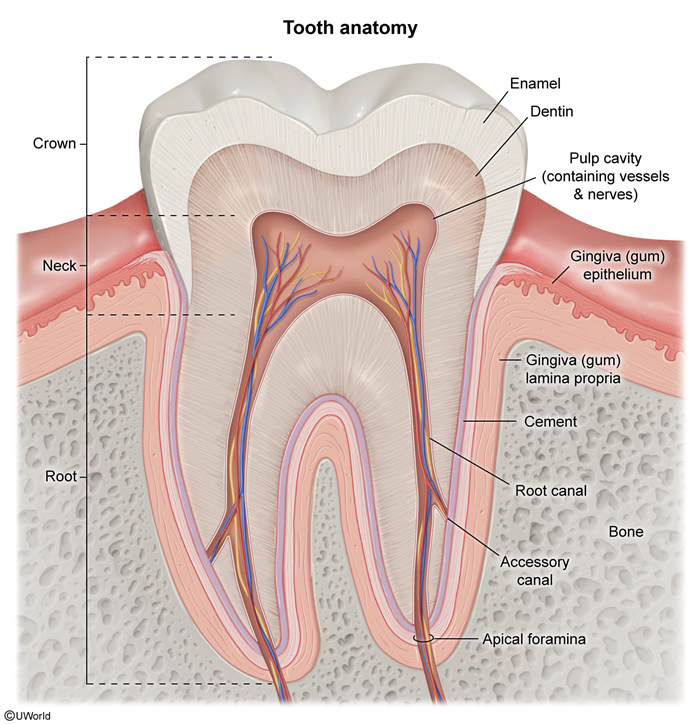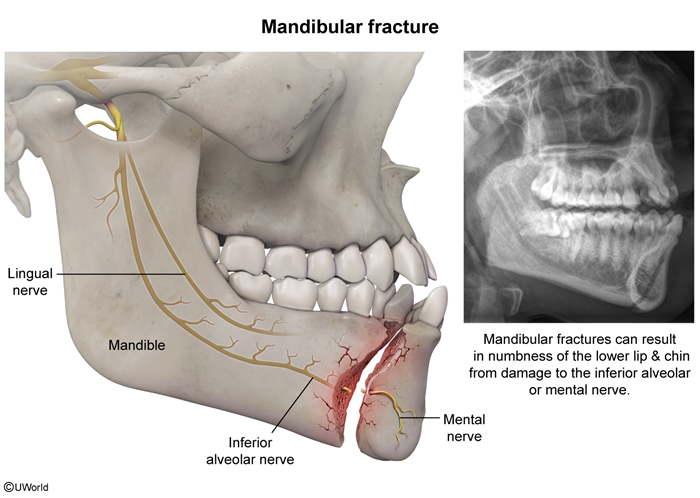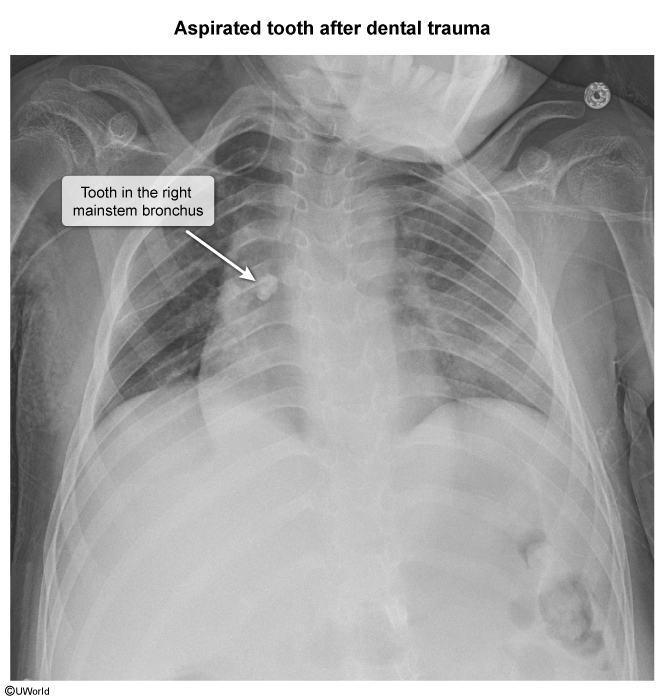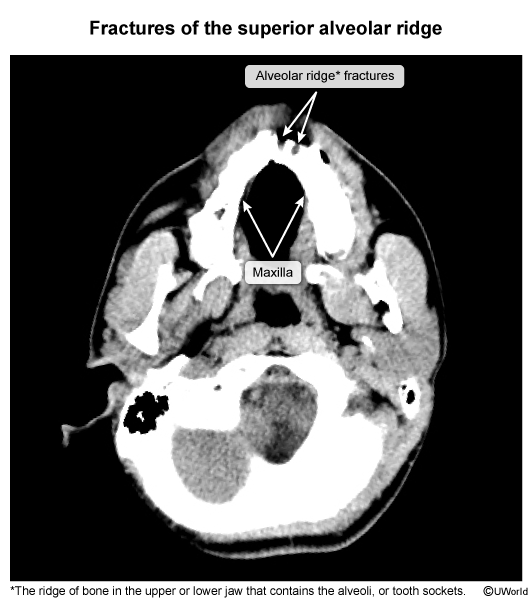Tooth Avulsion
Article Sections
Introduction
Tooth avulsion is a dental emergency involving the complete displacement of a tooth from its socket due to trauma. Prompt management is critical to preserving the vitality of the periodontal ligament on the root surface, which is essential for successful reimplantation and long-term tooth survival.
Anatomy
Each tooth is anchored in the alveolar bone of the jaw by the periodontal ligament (PDL), a specialized connective tissue composed of collagen fibers, blood vessels, and sensory nerve endings. The PDL spans the space between the cementum (a calcified layer covering the tooth root) and the alveolar bone, acting as a shock absorber and allowing slight movement of the tooth within the socket (Figure 1).
Pathogenesis
In the event of tooth avulsion, the tooth is forcibly ejected from the socket, and the PDL fibers are torn. Most of the PDL remains attached to the root surface of the avulsed tooth, whereas a smaller portion remains in the socket. These PDL cells are crucial for successful reimplantation because they mediate reattachment of the tooth to the alveolar bone and help prevent complications such as root resorption, ankylosis (fusion of the tooth to the bone), or tooth loss.
Continue Learning with UWorld
Get the full Tooth Avulsion article plus rich visuals, real-world cases, and in-depth insights from medical experts, all available through the UWorld Medical Library.
Figures



Images

